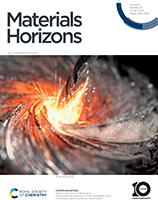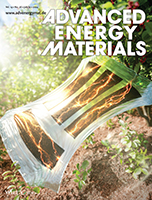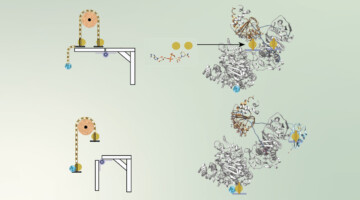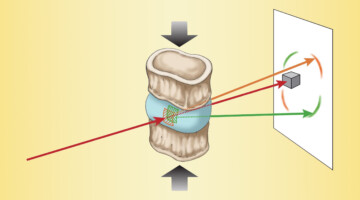Adding “bulky” organic molecules earlier in solar-film synthesis slows crystal growth, leading to the formation of a protective surface layer that improves durability and efficiency. These next-gen materials could revolutionize solar-cell technology, offering increased efficiency, lower cost, lighter weight, and flexible solar modules. Read more »![]()
![]()
ALS Work Using Scattering/Diffraction
These techniques make use of the patterns of light produced when x-rays are deflected by the closely spaced lattice of atoms in solids and are commonly used to determine the structures of crystals and large molecules such as proteins.
Aluminothermic reduction of CeO2: Mechanism of an economical route to aluminum–cerium alloys
In this study, we demonstrate a novel approach to producing Al–Ce alloys by reducing CeO2 in liquid aluminum at 95% reduction efficiency. This work provides the basis of an economic route to producing high-strength Al–Ce alloys with enhanced dispersion strengthening from embedded Al2O3 particles. Read more »
Establishing Co-Continuous Network of Conjugated Polymers and Elastomers for High-Performance Polymer Solar Cells with Extreme Stretchability
Researchers developed intrinsically stretchable organic solar cells (IS-OSCs) with exceptional mechanical robustness, by constructing co-continuous networks of conjugated polymers (D18) and elastomers (SEBS) in photoactive layers. The resulting IS-OSCs preserve 86% of their initial efficiency at 50% strain, demonstrating potential for wearable applications. Read more »
Surtsey Volcano: A Rare Window into Earth’s Oceanic Crust
Surtsey, a very young oceanic island in Iceland, emerged through explosive volcanic activity in 1963. Utilizing various techniques, including x-ray microdiffraction at the ALS, researchers gained unique insights into the transformation of volcanic glass to form mineral cements in the basaltic rock of underwater volcanoes. Read more »
New Insights Lead to Better Next-Gen Solar Cells
Perovskites show great promise to reduce the costs of solar power but are not yet durable enough to be commercially viable. Researchers used simultaneous characterization techniques to understand why a simplified fabrication process works so well, providing key insights to nudge perovskites closer to commercialization. Read more »
Novel modifications of PARP inhibitor veliparib increase PARP1 binding to DNA breaks
The catalytic activity of PARP1 is associated with DNA damage detection and repair among other cellular functions. We describe efforts to modify the allosteric properties of veliparib, a potent catalytic inhibitor of PARP1. These compounds highlight a unique way to trigger PARP1 retention on DNA breaks and open a path to unveil the pharmacological benefits of such inhibitors with novel properties. Read more »
Bifurcation of High- and Low-Energy Electrons in Microbial Metabolism
A class of chemical reaction found only in biology, electron bifurcation channels two electrons from one donor to two separate acceptors, with one electron elevated in energy at the expense of lowering the energy of the second. Researchers used the ALS to study this process in a microbial protein involved in this bioenergetic pathway. Read more »
The Effects of Diabetes on Spinal-Column Biomechanics
Researchers found that type 2 diabetes induces earlier onset of plastic (nonrecoverable) deformation in intervertebral discs by impairing the biomechanical behavior of collagen. A greater understanding of the underlying causes of tissue failure in diabetes—a growing problem worldwide—is important in helping to prevent and treat symptoms. Read more »![]()
How Processing Affects Structure in Composite Nanotube Yarns
Using the ALS, researchers found quantitative correlations between processing parameters and the structure of ultrafine, polymer-reinforced carbon-nanotube fibers. The work will facilitate the production of high-strength materials, including those needed for positioning target capsules for fusion research at the National Ignition Facility. Read more »![]()
![]()
A Bio-Inspired Metal-Organic Framework for Capturing Wellhead Gases
Burning of natural gas at oil and gas wells, called flaring, is a major waste of fossil fuels and a contributor to climate change. In this work, researchers synthesized and characterized a metal-organic framework that uses biomimetic chemistry to convert wellhead gases into economically valuable feedstocks for petrochemical products. Read more »
- « Previous Page
- 1
- …
- 3
- 4
- 5
- 6
- 7
- …
- 39
- Next Page »









